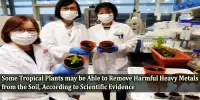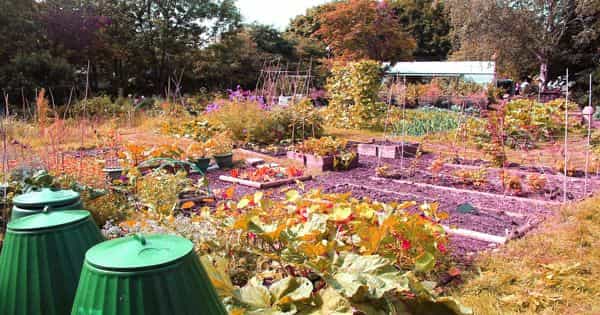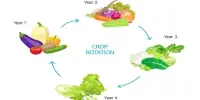A research-industry collaboration has produced a new way for managing a variety of devastating agricultural diseases using native, beneficial soil microorganisms. The agri-tech breakthrough aims to provide farmers with a means to lower the expense and environmental impact of chemical crop disease treatments now in use.
Hundreds of strains of Pseudomonas bacteria were isolated and examined from the soil of a commercial potato farm, and the genomes of 69 of these strains were sequenced by the John Innes Centre team.
The researchers was able to uncover a crucial mechanism in some of the strains that protected the potato crop from hazardous disease-causing bacteria by comparing the genomes of those demonstrated to decrease pathogen activity with those that did not.
The researchers next demonstrated that the creation of tiny molecules known as cyclic lipopeptides is vital in the control of potato scab, a bacterial disease that causes significant losses in potato harvests, using a mix of chemistry, genetics, and plant infection experiments.
These tiny compounds have an antibiotic impact on the pathogenic bacteria that cause potato scab, and they aid in the movement and colonization of the plant roots by the protective Pseudomonas bacteria.
Irrigation generates significant alterations in the genetically varied Pseudomonas population in the soil, according to the tests.
The first author of the study Dr. Alba Pacheco-Moreno said, “By identifying and validating mechanisms of potato pathogen suppression we hope that our study will accelerate the development of biological control agents to reduce the application of chemical treatments which are ecologically damaging.”
“The approach we describe should be applicable to a wide range of plant diseases because it is based on understanding the mechanisms of action that are important for biological control agents,” she added.
By identifying and validating mechanisms of potato pathogen suppression we hope that our study will accelerate the development of biological control agents to reduce the application of chemical treatments which are ecologically damaging.
Dr. Alba Pacheco-Moreno
Researchers offer a strategy for screening the microbiome of nearly any crop site, taking into consideration different soil, agronomic, and environmental circumstances, in a report published in eLife.
The approach can scan the soil microbiome for therapeutic bacteria and figure out which chemicals are being created to suppress pathogenic bacteria by utilizing breakthroughs in high-speed genetic sequencing.
They can also reveal how agronomic factors like soil type and irrigation affect these beneficial bugs.
The next stage in the new method is to reintroduce the beneficial bugs into the same area in larger numbers or in mixed strain cocktails as a soil microbiome booster.
Dr. Jacob Malone, Group Leader at the John Innes center and co-corresponding author of the study explains the benefits, “The massive advantage of this approach is that we are using bacterial strains that are taken from the environment and put back in the same specific biological context in larger numbers so there is no ecological damage.”
The bacterial concoctions could be applied as seed coatings, as a spray, or by drip irrigation to improve the microbiome.
Dr. Andrew Truman, Group Leader at the John Innes Centre, and corresponding author of the study tell us about the long-term vision for this method, “In the future, it’s not the molecule produced by the bacteria that we would use, it would be the Pseudomonas strain itself. It offers a more sustainable route we know these bacteria colonize the soil where potatoes grow, and they provide protection to the crop. Using a bacterium, you can easily grow and formulate it in an appropriate way and apply it to the field, and it is much greener than using a synthetic chemical.”
Plant infections are a major agricultural issue that results in significant crop losses, such as potatoes. Streptomyces scabies, a bacterial pathogen that produces potato scab, and Phytophthora infestans, an oomycete disease that causes potato blight, which was a significant cause of the Great Famine in Ireland, are two important potato infections.
Because they release natural chemicals that stimulate plant growth and prevent infections, Pseudomonas bacteria are typically associated with plants and have been extensively investigated as biological control agents. However, inconsistency has limited their utilization in the past.
Previous research on the reduction of potato scabs has suggested that Pseudomonas could have a biocontrol role. However, a lack of mechanistic information slowed development. Irrigation has also been shown to reduce Streptomyces scabies infection, and this study shows that this is due to the action of water on microbial populations.
















